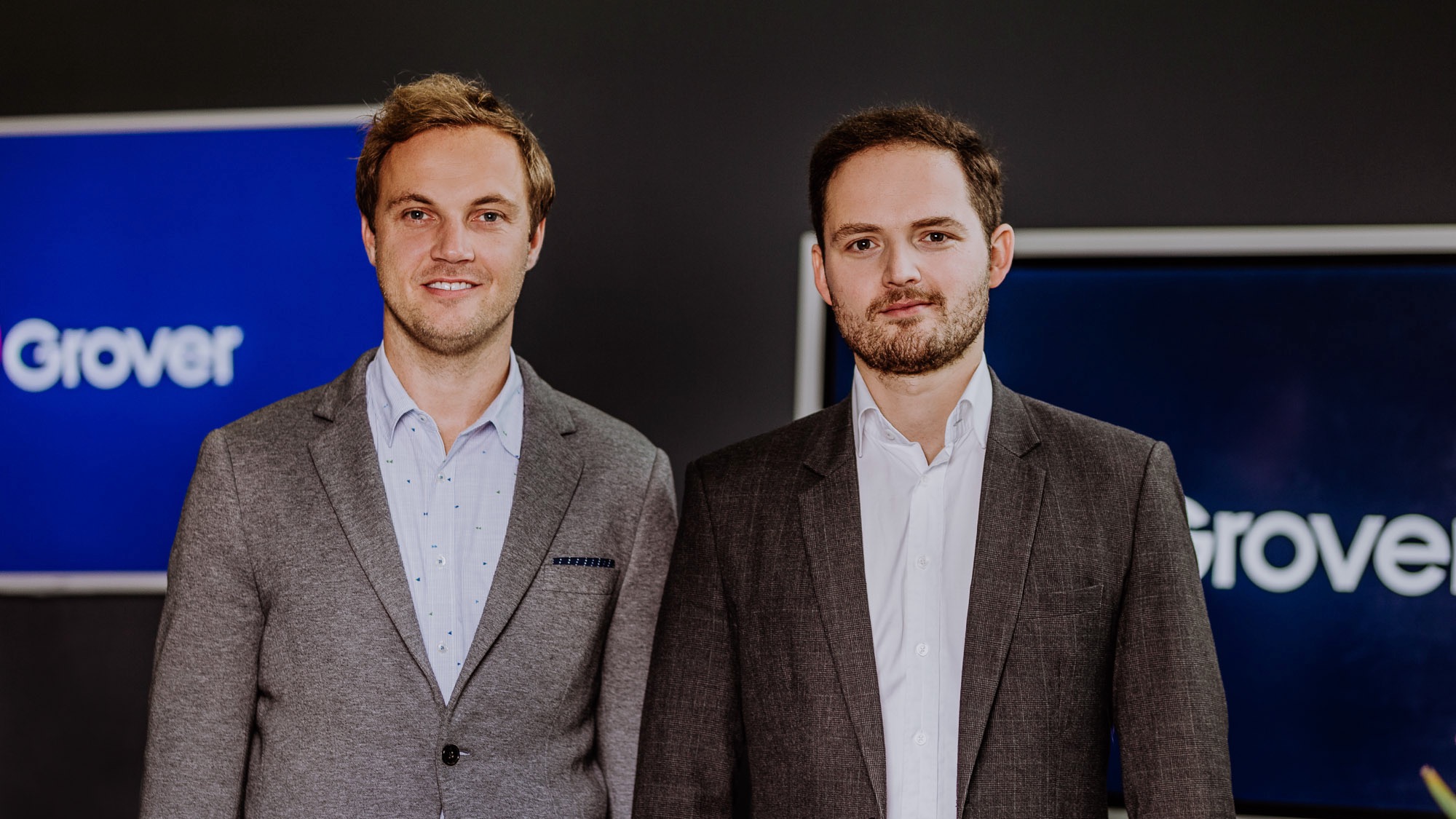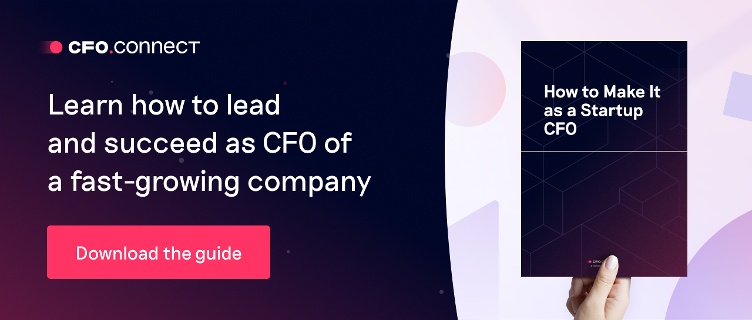Inventory financing for startups: how to grow with debt funding
)
Published on August 12, 2020
)
This startup financing series is a collaboration between Spendesk and CFO Connect. Join this leading finance community here.
Our model is pretty much completely new for consumer electronics, even if inventory financing has been around for decades. So I’m delighted to have been asked to provide this explanation and exploration of the finer points of inventory financing and to share how it works for Grover.
In my time as CFO of Grover, I’ve been able to use this tool to raise €270 million in funding, enabling the company to scale in a very equity-efficient manner.
In this article, I’ll explain how inventory financing works, what type of business models benefit from it, and why you should consider financing your business this way.
Let’s begin with more about Grover, and how I found my way here.
About myself and Grover
I have a banking background: I worked in London for five years, doing investment banking. I worked on things like structured finance and mergers and acquisitions. Over time I grew more excited about building companies myself rather than analyzing other companies, and, after finishing my MBA at INSEAD, made the move into the startup world.
I joined a Fintech startup in Hamburg where we also used asset-backed debt and stayed there for 3 years, helping raise more than €300 million in equity and debt from investors like Paypal founder Peter Thiel, the IFC and Naspers. In 2017, I was introduced by a friend to Michael Cassau, founder of Grover.
 Image: Thomas Antonioli (left) and Michael Cassau.
Image: Thomas Antonioli (left) and Michael Cassau.
Grover is an affordable and sustainable form of access to the latest tech products — the products that people use to be more productive, more connected, and have fun. We offer a simple monthly subscription for the best in tech.
On Grover.com, you can rent everything from smartphones to laptops, to tablets and drones, to gaming and VR equipment for your business or yourself. And it’s a completely seamless, frictionless, worry-free process.
There's also insurance bundled into the service. So you never have to worry about breaking your device. We're also starting to work directly with the major consumer electronics brands to offer subscriptions for their devices, which is a very big, important topic, considering how wasteful the consumer electronics industry is currently set up to be.
Globally, 52 million tons (that’s the weight of 350 Queen Elizabeth II cruise ships) worth of toxic e-waste are generated each year. With Grover’s model of refurbishing and recirculating devices, that amount can be brought down significantly.
I immediately fell in love with the idea of providing cool tech products to people in a more sustainable and more affordable way. And since then I’ve been fortunate enough to grow the company with a very international, dedicated and smart team. We have roughly 120 employees, including around 15 in the Finance Team.
 Image: Grover offices.
Image: Grover offices.
We've now raised just over €300 million in equity and debt capital.
By nature of my role as CFO and the company’s business model, my focus is often on the fundraising side – both debt and equity. We buy the assets that we rent out to our customers, so we have them on our own balance sheet, or in a special purpose vehicle.
How inventory financing works for Grover
We can only grow if we have sufficient debt capital.
As a startup, cash is always restricted. You’d love to take a bank loan to ease the pressure, but banks are always a little hesitant because you’re not profitable and don’t have an established credit history.
Inventory financing makes it possible for early-stage startups to take on relatively large quantities of debt before they turn profitable. You simply borrow money against the value of your inventory, almost like a mortgage.
In our case, we have special-purpose vehicles which belong to the Grover Group. They’re essentially separate legal entities which let us borrow from lenders against the residual value of the devices. This keeps the company protected if lenders come calling, and it also keeps things like profits with the company.
Here’s a simplified example: We buy an iPhone for €100, and the bank will say "we’ll give you €85 of loan against that."
Over time, we depreciate the asset and repay the loan from the rentals. We have something similar to a Bloomberg terminal for resale values, so we know exactly what a specific model in a specific condition will be worth if we sold it today. And then every month, we revalue our portfolio.
The average rental period is around nine to 10 months. And every time one subscriber is done with their device, we refurbish it, repair it (if necessary), and then send it to the next subscriber.
 Image: Grover unboxing.
Image: Grover unboxing.
That’s a positive effect we’re very proud of. At the end of the usage cycle, our devices don't have the same fate as many of the tech products that people buy in the traditional, linear fashion, which just end up in a drawer somewhere and then go to a landfill, or maybe get recycled.
Once we can’t rent products to subscribers anymore, we give them a new lease of life by selling them in the secondary market.
Inventory vs asset-based financing
If you’ve read Veronika’s earlier article on asset-based financing, you’re probably noticing some similarities. And to be honest, the process I just described is not “pure” inventory financing as some would define it — it’s somewhere between asset-based and inventory.
Classical inventory financing uses items you’re intending to sell — that’s what we normally think of as inventory. For example, a company like Zalando might have a warehouse full of sweaters they intend to sell in December. The value of these is very clear, and the bank will lend against these.
In his introduction to startup financing, Julius gave the example of a car dealership. They’re not renting cars, they’re selling them. So the expected value is more clear than for a company like Cluno, which offers cars as a subscription.
We do something similar to what Cluno does because we rent out electronics. So we can’t keep them on our balance sheets at the same value as they had when they were new. They do get sold eventually, but their sale value isn’t what the bank lends against.
So our model is probably closer to asset-based financing, but with some clear similarities to the inventory model.
Electronics vs automobiles
Compared with Cluno in the automobile market, consumer electronics is very new. Car leasing has been established for decades. There's an official list price for each model.
We needed to do a lot of convincing with our lenders to get them to accept that these consumer electronics products are actually worth something. With one of the banks, we went all the way through the process — six months of negotiations.
We got down to a final credit committee, and one of the board members said, "I don't think an iPhone is worth anything after three years." Which is obviously not true. If you go to eBay, you see that these things are actually worth quite a lot. But it's a notion that requires a little bit of building, like doing missionary work.”
Key advantages of inventory financing
For us, the clearest benefit is that we don't need to fund our electronics with equity. VCs are hoping for a return of something like 20% per year. But they also know that we’re going to struggle to show a 20% return on buying a laptop. So frankly, they’re pretty unlikely to invest at all under this business model.
And if they did, it would be at a hugely dilutive rate.
Instead, inventory-based loans let us reduce our equity funding by 85-90%. Instead, we reserve equity for growth. That money goes towards processes, people, and marketing strategies, as it does for most startups.
Meanwhile, our biggest cost — the electronics — is covered by debt funding.
Of course, there are other debt instruments available. For example, venture debt is regularly used by startups that aren’t yet profitable. But venture debt usually costs somewhere between 10-12% interest per annum.
With our model, we can give banks the first rank in security over our assets, which is obviously an advantage for them. As a result, they charge a lower price. It can be as low as 2-3%, or even lower if you're a more established company. But even for a startup, it can be somewhere around 4-5% interest.
And finally, once you’re all set up and running, the banks are often happy to increase financing as you go. Or even bring in another party to the same transaction.
So even though it’s tough to get started (as I’ll explain next), it’s quite simple once you have the first loans in place.
What makes inventory financing tricky
At this point, a lot of people ask me, “why doesn’t everybody do it?” Once I explain it in detail, I’ll usually get something like, "my God! This is so complicated. How can anybody make it work?"
The truth is, you learn as you go, and after five years, we’re very comfortable with it. But there are quite a few things that you can get wrong if you don't pay attention.
The first disadvantage is that first you need to set up a specific legal structure – these SPVs. That means a lot of legal documentation. You have operational and financial covenants. You also need to maintain a certain loan- to- value ratio on that. And then you may have further agreements, maybe related to your cash runway, your profitability, and more.
From an administrative perspective, these things are difficult. But you’re also agreeing to things that can have a significant legal impact. If you breach a covenant, in the worst case the lender can call in their debts, which then usually has a domino effect of pushing the company into insolvency.
Because if you have a €****100 million facility as a startup, you're not going to be able to repay it from one year to the next. So you really need to be careful.
You also need to pick the right partner. Unexpected things happen to startups, and you need to have a partner that’s generally open, flexible and constructive in reacting to such situations.
Another aspect is that you need to have well-structured operational and reporting processes, because these inventory finance facilities are intense on the reporting side. And they also require you to commit to certain operational process.
Your credit underwriting, for example. When you enter this type of facility, the lender will review and approve your underwriting policy. And then afterwards, you may only be able to change that within a certain range without having it approved by the lender. They'll want to make sure that you don’t change your approach once it’s not your money you’re spending.
And lastly, all of this requires experienced people who know how to set it all up in a way that works for you. Because you can get quite a few things wrong, unknowingly, and suddenly you're there with something in your contract that is very counterproductive. You definitely need a good legal advisor.
Which startups should consider inventory financing?
In theory, this model works for any asset- or inventory-heavy company. I mentioned Zalando above, because obviously the model suits e-commerce companies that hold the inventory themselves (rather than simply on-selling).
Wholesale inventory financing is another one of the most common examples – retail companies moving large amounts of products.
In the e-mobility space, all the e-scooter, e-bike, and car subscription startups will use some version of this model. They all require large amounts of capital and also have to keep their fees as low as possible if they want to continuously grow their subscriber numbers.
Further examples are companies like Dr Smile or Invisalign. Their machines cost something like €100,000 each. Again, that would be closer to asset-based financing, unless they plan to sell them somewhere down the line.
Essentially, any company dealing with lots of machinery or inventory has the potential to raise funds this way.
The perfect option for a certain breed of startup
As we’ve seen, inventory financing provides a great opportunity for startups who need high amounts of relatively cheap funding. Instead of asking for massive amounts of equity funds just to buy the assets you need, you can get your company off the ground with non-dilutive loans at great interest rates.
Of course, the trade-off is that you need to know what you’re doing. Experience and good legal help will always be worth the investment.
But once you’ve got the right set-up and are confident with it, you also have the potential for rolling credit whenever you need it. And compared to going on the usual startup fundraising roadshow every 18 months, that’s a huge relief.
If you’re an e-commerce company or plan to join the sharing economy, I highly recommend checking out if inventory financing might be the option for you.
Read more on startup financing
Beyond equity: the full range of startup financing instruments
What is venture debt? A complementary alternative to venture capital
How revenue-based financing supports sustainable startup growth
Supply chain financing: a smart solution for fast working capital
--------------------------------
Thomas Antonioli is CFO of Grover, a technology company that makes electronic goods accessible and affordable for everyone. With a background in banking and an MBA from INSEAD in Paris, Thomas has helped grow several startups to more than €300 million in funding, and has built successful, high-functioning finance teams.

)
)
)